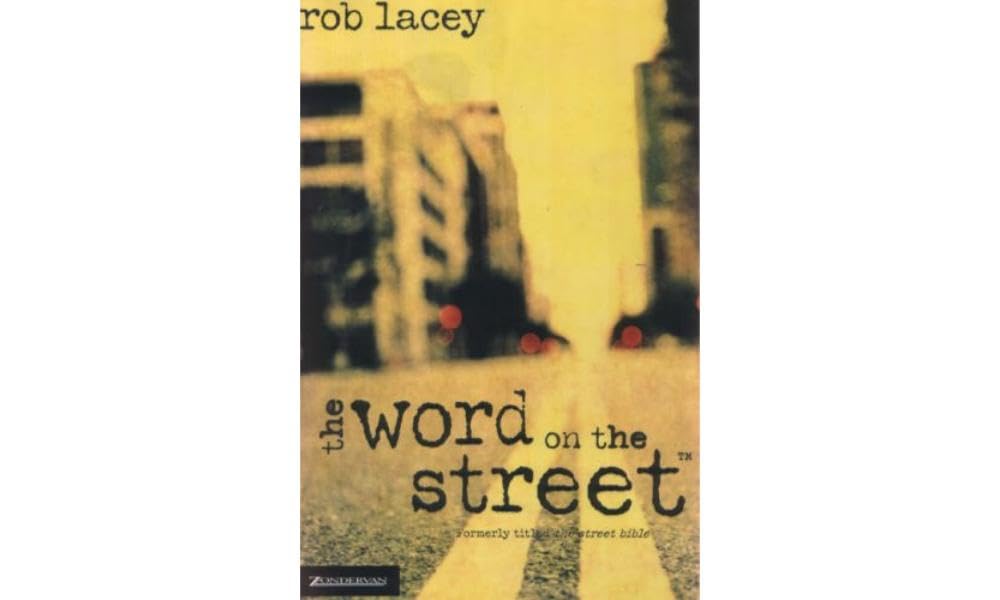Have you ever felt like the language of the Bible is too formal or distant from everyday conversations? Introducing “The Word on the Street Bible” – a fresh and contemporary take on scripture that brings the ancient texts to life in a way that resonates with modern readers. This blog post explores the benefits of this innovative approach to biblical understanding, offering a new perspective on familiar stories and teachings.
By presenting the teachings of the Bible in a more relatable and accessible language, “The Word on the Street Bible” bridges the gap between ancient wisdom and contemporary life, making it easier for readers to connect with the messages and lessons contained within. Whether you’re a lifelong believer, a curious skeptic, or simply someone interested in exploring the wisdom of the ages, this modern interpretation of scripture offers a unique opportunity to engage with timeless truths in a way that feels relevant and meaningful.
Unveiling the Impact of The Word on the Street Bible
The Word on the Street Bible is a contemporary version of the Bible that aims to make the ancient text more accessible and engaging to modern readers, especially those who may find traditional translations difficult to understand. By using everyday language and idioms that are familiar to today’s audience, this version of the Bible brings the stories and teachings of the scriptures to life in a fresh and relatable way.
The Word on the Street Bible retains the essence of the original Biblical texts while presenting them in a format that is easier to comprehend for a broader range of readers. This version is particularly popular among young people and those who may be new to exploring the Bible, as it removes barriers to understanding and invites readers to engage with the messages and narratives in a more immediate and personal way.
One of the key features of The Word on the Street Bible is its use of contemporary language and cultural references to convey the timeless truths and wisdom found in the scriptures. By translating the text into a more colloquial style, this version seeks to bridge the gap between the ancient world of the Bible and the realities of our modern lives, making the messages of faith and spirituality more relevant and impactful for today’s readers.
In addition to its approachable language, The Word on the Street Bible also includes helpful annotations and explanations to assist readers in understanding the context and significance of the passages they are reading. These insights provide valuable background information and deepen the reader’s appreciation for the rich tapestry of stories and teachings contained within the Bible.
Overall, The Word on the Street Bible offers a fresh and dynamic perspective on the scriptures, inviting readers to engage with the timeless wisdom and spiritual truths of the Bible in a way that speaks directly to their hearts and minds. Whether you are a longtime believer or someone exploring the Bible for the first time, this contemporary version provides a powerful and accessible entry point into the rich tradition of Christian faith and scripture.
What did Jesus say about preaching on street corners?
In the Bible, Jesus addressed the practice of preaching on street corners in Matthew 6:5. He said, “And when you pray, do not be like the hypocrites, for they love to pray standing in the synagogues and on the street corners to be seen by others. Truly I tell you, they have received their reward in full.” This passage highlights Jesus’ teaching that public displays of religious acts should not be done for the sake of receiving praise from others, but rather should be done with sincerity and humility before God.
Is there a Gen Z version of the Bible?
There isn’t an official “Gen Z version” of the Bible per se. However, there are Bible translations that aim to make the language more accessible and easier to understand for younger generations. Versions like The Message or The New Living Translation are often popular choices among young people due to their contemporary language and readability. These translations seek to convey the timeless message of the Bible in a way that resonates with modern audiences, including those in Gen Z.
Is there an Ebonics Bible?
There is not an official “Ebonics Bible.” However, there have been efforts to translate the Bible into Ebonics, also known as African American Vernacular English (AAVE). These translations are not widely accepted or recognized by mainstream Christian denominations. It’s important to note that interpretations of the Bible vary, and some may choose to read the text in different dialects or languages.
Where in the Bible does it talk about spreading the word?
One of the key passages in the Bible that talks about spreading the word is found in the New Testament, specifically in the Gospel of Mark, chapter 16, verse 15. In this verse, Jesus instructs his disciples to “Go into all the world and preach the gospel to all creation.” This commandment is often referred to as the Great Commission and underscores the importance of sharing the message of salvation with others. Additionally, in the book of Matthew, chapter 28, verses 19-20, Jesus again commissions his followers to “Go and make disciples of all nations, baptizing them in the name of the Father and of the Son and of the Holy Spirit,” emphasizing the global scope of the mission to spread the word of God. These verses highlight the biblical mandate for Christians to share their faith and proclaim the good news of salvation to all people.

